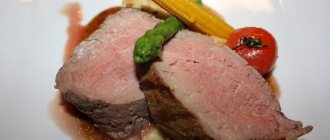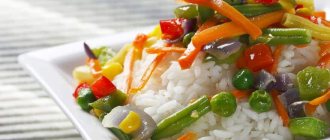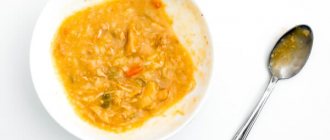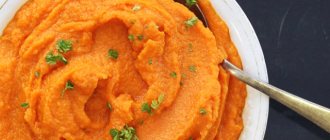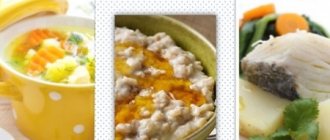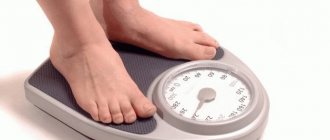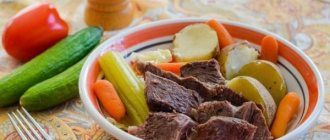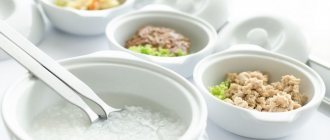Gastrectomy is a surgical procedure aimed at removing a piece of the stomach or the entire organ. This operation is performed in the presence of neoplasms, both benign and cancerous. As a result of its implementation, substances enter the intestines in a poorly processed form.
Consequently, the body does not receive enough vitamins and microelements. This article describes nutritional principles after gastric removal that help prevent complications.
About pathology
Malignant formations in the gastrointestinal tract arise, among other things, due to emotional overload, abuse of alcohol and harmful products.
One of the serious ailments of this kind is a stomach tumor. The disease promotes the death of mucosal cells. Pathology requires surgical intervention. The operation should be carried out as quickly as possible.
This medical procedure consists of removing a fragment of an organ and lymph glands in which an inflammatory process has developed. This procedure is necessary in order to prevent tumor growth. If pathology is detected at a late stage, radical gastrectomy is performed.
This surgery involves removing the entire organ. The operation has an extremely negative impact on the patient's condition. Some patients die as a result of its complications.
However, even if the surgical intervention was not radical, the person will need quite a lot of time to recover. To normalize blood circulation, doctors install catheters.
Within a week after this event, the patient experiences discomfort, so he is prescribed analgesics. At first, the human body is not able to assimilate the usual foods and amounts of food. Therefore, you should eat in small portions, five to six times a day. It is also necessary to strictly adhere to the diet. Proper nutrition after gastric removal helps the patient quickly recover and improve their well-being.
General nutrition rules
The main principle of a postoperative strict diet is to eat easily digestible foods that do not irritate the gastric mucosa and do not allow the gastrointestinal tract to work intensively.
Dishes are pureed, homogeneous, with all components thoroughly chopped. Large pieces that could cause complications should not be allowed into the stomach. You need to eat at the same time, in fractions, every 2 hours, which allows gastric juice to be produced at the right time. From the first day of eating regular food, you need to monitor the amount of food consumed.
At one time you can eat no more than 50 grams of pureed food from light, digestible foods. Gradually, the daily amount of food increases and by the 6th postoperative day it reaches 200 grams. Do not overload your stomach by eating at night. At least two hours before going to bed, you should have your last meal of light, quickly digestible foods.
One of the important rules of nutrition in the postoperative period is to eat sufficiently high-calorie food in small portions. Carbohydrates and fiber should enter the body in small quantities, and relapses can be prevented with the help of low-fat milk and herbal decoctions. The diet is followed for a very long time, and some foods must be excluded from the diet of an ulcer patient forever.
Attention: only the attending physician can prescribe a specific diet, taking into account the nature of the disease and the type of surgery performed, and the patient’s condition. After discharge from the hospital, he will be given dietary advice at home.
Read: Medicine for ulcers and gastritis: description of inflammatory processes, symptoms, treatment with alternative medicine
Early postoperative period
To restore normal functioning of the digestive system in the early postoperative period, many foods are prohibited for the patient. At this stage you can use:
- omelette;
- unsaturated broth;
- porridge;
- soups.
Dishes are steamed (omelettes), porridges are boiled until liquid, soups are prepared from dietary meat without fat. After a few days, the diet is expanded by adding vegetable purees, fish souffles and steamed meat and soft products (cutlets, meatballs, zrazy) to the menu. Subsequently, the diet is expanded by adding low-fat cottage cheese and milk, non-sour kefir, and white bread croutons.
Vegetable puree is prepared from pumpkin or zucchini with carrots, potatoes or beets, porridge is prepared from oatmeal, buckwheat, and rice. For meat products they use turkey, chicken, rabbit, and a little later - lean beef or veal. Mashed potatoes and porridge can be seasoned with natural butter in a small amount. The menu expands as the patient’s body recovers.
Late postoperative period
Gradually, over one and a half to two months after the operation, a transition is made from ground, crushed food to ordinary products that are on the permitted list. The late recovery period lasts about a year, and if the prognosis is favorable and there are no relapses, the diet can be expanded afterward.
Now you can add not too fatty cheese and raw fruits - bananas and apples - to your food. But, still, raw fruits can be eaten no more than two or three fruits per week. It is better to prepare various dishes from fruits using heat treatment.
Raw vegetables are also introduced into the diet, from which you can make salads with fresh herbs and sunflower oil. You should not eat cabbage of any kind raw. Only a few months after the operation can the patient cook borscht or cabbage soup with fresh cabbage in meat broth no more than once a week. The menu is enriched with unsweetened cookies, different types of bread, low-fat sour cream, but not for daily use.
Attention: the late postoperative period is dangerous because the acute symptoms of a peptic ulcer cease to bother you and the person can draw conclusions about a complete recovery. But, for complete restoration of the gastric mucosa, it will take a lot of time, during which it is necessary to adhere to a strict diet.
What complications occur as a result of gastrectomy?
The consequence of resection is disruption of the gastrointestinal tract. The absence of an organ fragment results in food moving faster through the digestive tract. Because of this, patients experience a feeling of heaviness in the abdomen.
In addition, many patients notice dizziness, increased drowsiness, a feeling of weakness, and profuse sweating. Some people experience loss of consciousness, anemia, and weight loss. All these symptoms are explained by metabolic and intestinal disorders and vitamin deficiency. To avoid such phenomena or at least minimize them, you should follow the rules of nutrition after removal of part of the stomach. Patients need to adhere to the diet for six months.
What is there in the early postoperative period?
Self-feeding is not possible for 1-2 days after gastric surgery. The necessary nutrients are administered through a vein drip to prevent exhaustion of the body and speed up recovery. The calculation of the required nutrients is carried out by a doctor based on a blood test. It is recommended to administer dry milk mixture diluted in water through a tube, as it contains a high concentration of protein. The optimal dosage is 10 g of powder dissolved in 50 ml of liquid.
On day 3, if there are no complications after gastrectomy, dosed consumption of a decoction of rose hips, weak brewed tea or liquid compote is allowed. You can drink 1/6 of a glass at one time. Liquids are drunk up to 6 times a day. Allowed foods for the next week after surgery are presented in the table:
| Day | Portion volume, g | Recommended dishes |
| 4 | 50 | Cream soup |
| Meat and fish soufflé | ||
| Scrambled eggs | ||
| 5—6 | 100—150 | Steam omelette |
| Oatmeal | ||
| Ground boiled vegetables | ||
| 7—9 | 200—250 | Meat and fish puree |
| Porridge curd | ||
| 10 | 350—400 | Vegetable puree |
| Kneli | ||
| Chicken steam cutlets |
Return to contents
Basic principles of diet
What should the diet be like? First of all, you need to remember the following recommendations:
- The diet should include a sufficient amount of proteins and complex carbohydrates.
- Fats should be limited and foods fried in oil should be excluded.
- Dishes containing sugar are also prohibited. Candies, cakes, carbonated drinks and juices in packages are not allowed.
- You should avoid foods that promote the secretion of bile and increase the activity of the pancreas.
- It is necessary to limit the amount of salt consumed to 5 grams per day.
- Products containing alcohol, black coffee, strongly brewed tea and cocoa are prohibited.
- Food containing starch (bananas, potatoes, legumes) should be kept to a minimum.
- Eat small portions, at least five times a day.
- Replenish the fluid balance in the body with freshly squeezed juices without salt and sugar, weak green tea, and clean water.
It must be remembered that light but nutritious meals containing sufficient amounts of fiber and vitamins will help a person quickly return to normal.
If the patient is bothered by unpleasant symptoms after resection, he needs to consult a specialist about therapy.
Table No. 0 A
This diet therapy is prescribed on the fifth day after surgical manipulation of a perforated gastric ulcer, provided that peristalsis has returned to normal. If the functions of the gastrointestinal tract have not been restored, continue the course of IV drips. The duration of diet table No. 0 A after surgery for a perforated gastric and duodenal ulcer is from two to five days, depending on the patient’s health condition. Doctors recommend bed rest and avoidance of stressful situations.
Nutritional value of the diet table:
- ten grams of protein;
- fifteen grams of fat;
- no more than two hundred grams of carbohydrates.
Main products of Table No. 0A:
- oatmeal, semolina, rice porridge boiled to a slimy form with the addition of cream;
- weak, not rich chicken or turkey broth;
- pear and pumpkin jelly;
- rosehip decoction.
Sample menu for the period of Table No. 0A
In the first days of eating, it is important to follow the doctor’s instructions and diet. If you eat prohibited foods, inflammation may develop, the walls of the gastrointestinal tract will be irritated, and complications are possible.
It is allowed to eat only liquid dishes in small portions from six to eight times a day, two hundred grams per meal. They are guided by a sample menu after surgery for a perforated ulcer, but look at the patient’s well-being. If any of the products cause pain, bloating or discomfort, they are temporarily discontinued.
Menu for the first day
For breakfast, cook oatmeal in water or with the addition of a teaspoon of cream. It is allowed to drink rosehip decoction. The porridge is boiled to a mucus-like liquid state, and the cereal is ground before cooking.
For second breakfast, a weak pear jelly is prepared. Wash it down with weak sweet tea (half a glass).
Snack before lunch - dried fruit compote.
For lunch, prepare a weak chicken breast broth. Supplement with rosehip decoction (no more than half a glass).
For the second lunch, prepare jelly from berries.
For an afternoon snack, rice porridge is boiled until liquid (white rice is ground before cooking). Wash it down with half a glass of sweet, weak tea.
For dinner, prepare a weak veal broth.
Second day diet
For the first breakfast, boil liquid semolina porridge without milk. As a drink - weak sweet tea.
For second breakfast, veal broth is prepared. Take half a glass of rosehip decoction.
For a snack, cook liquid pumpkin jelly.
Before lunch, you can make a second snack with turkey fillet broth.
For lunch, prepare pear jelly.
For the second lunch, very liquid jelly is cooked. As a drink - sweet tea.
For an afternoon snack, boil liquid, dairy-free oatmeal porridge.
A weak turkey breast broth is suitable for dinner.
Third day
For breakfast, cook very thin dairy-free rice porridge. As a drink - dried fruit compote.
For the second meal, prepare pear jelly.
Have a snack with chicken breast broth, wash down with weak, sweet black tea.
Before lunch, jelly-like oatmeal porridge is cooked in water. For drinks - half a glass of rosehip decoction.
For lunch, cook veal broth.
Liquid pumpkin jelly is suitable for an afternoon snack.
Drink rosehip compote as a snack.
For dinner, make pear jelly.
The patient's diet on the first day
First, a person is prescribed complete fasting. He must fast from food and liquid for two days. On the third day, you can consume small portions of a decoction made from rose hips, weak tea, and unsweetened compote without fruits and berries. However, such drinks are allowed only if there is no stagnation in the gastrointestinal tract.
2-3 days after gastrectomy, the patient is administered a special mixture containing proteins, vitamins and minerals using a probe. What kind of nutrition does a person need for 4-5 days after removal of the stomach? Recommendations for preparing a diet are given taking into account factors such as the stage of development of the pathology, the age category of the patient, his physical well-being and psychological state.
You should also gradually increase the load on the gastrointestinal tract so as not to provoke disturbances.
The diet should also include foods that prevent the appearance of tumors. Nutrition after removal of the stomach for cancer involves eating enough fruits and vegetables, as well as avoiding foods containing carcinogenic substances.
General rules
A perforated gastric ulcer is a complication of peptic ulcer disease and occurs as a result of the progression of destructive processes in a chronic ulcer. Perforation is promoted by a sudden increase in intra-abdominal pressure (for example, lifting weights or abdominal trauma), stress on the digestive organs (alcohol, rough food), and stress.
Visually, a through defect is noted in the wall of the stomach, as a result of which the contents of the stomach enter the abdominal cavity, acts as an irritant and leads to peritonitis (serous-fibrinous and purulent). When a stomach ulcer is perforated, it develops quickly (in 2-3 hours).
The body’s primary reaction to perforation is pain shock (sharp, dagger-like pain in the epigastrium) and possible loss of consciousness. Due to the spread of exudate, the pain quickly spreads throughout the abdomen and radiates to the supraclavicular region to the left. Nausea and reflex vomiting, dry mouth and weakness often appear. Perforation of an ulcer is an indication for urgent surgery, and the choice of method depends on many factors and indications. Conservative treatment is possible only as a temporary forced measure in very serious condition of the patient and in the case of covered perforation, when there are no symptoms of peritonitis .
The operation most often involves suturing perforated ulcers. With the use of modern medical technologies, it is possible to perform video endoscopic operations, as well as suturing the hole using the Endo Stitch device.
The suturing area is peritoneized by the omentum, and the tightness of the sutures is checked by pumping air through the probe. The disadvantages of this method of operation are the possibility of repeated recurrence of the ulcer in 50-60% of patients, incomplete sealing of the sutures and narrowing of the lumen of the gastric outlet. More radical operations are gastrectomy, vagotomy and excision of the ulcer with gastric drainage surgery.
Gastric resection is performed with a long history of ulcers, callous ulcers and repeated perforation. To perform resection, the absence of widespread peritonitis is necessary. The postoperative period includes therapeutic nutrition.
Diet after surgery
Nutrition begins with surgical Diets No. 0A , 0B , 0B . They provide unloading and sparing of the stomach, prevent the appearance of bloating, since they contain a minimal amount of food nutrients. A perforated gastric ulcer and the condition after its surgical treatment is a serious disease and requires gradual restoration of gastric function. The diet during this period should contain easily digestible foods and a gradually increasing amount of proteins, fats and carbohydrates while sharply limiting salt intake.
On the first postoperative day after surgery, hunger is indicated, and from the second day warm sweet tea (250 ml) and rosehip infusion (50 ml) are administered. They are given every 20 minutes, a teaspoon. From 3-4 days, with normal peristalsis, the patient is prescribed Table No. 0A (it is supplemented with two soft-boiled eggs). A week after the operation, it is possible to transfer to Table No. 0B , and after 9 days - No. 0B .
- Table No. 0A is the lowest in calories and contains only 10 g of protein, 15 g of fat and up to 200 g of carbohydrates. The diet consists of mucous decoctions into which cream is added, weak meat broth, berry jelly (or jelly), rosehip infusion and juices. Food is only in liquid form in portions up to 250 g, meals are organized 7-8 times a day. Pureed foods, carbonated drinks and whole milk, which can cause bloating, are not allowed.
- Table No. 0B already contains more basic nutrients (50 g of protein and fat each), no more than 4 g of salt and 250 g of carbohydrates. Food is allowed in liquid and puree form, and the portion size is increased to 400 g. The diet is expanded with slimy cereal soups, steam omelettes or soft-boiled eggs, pureed rice and buckwheat porridge in liquid form, pureed lean meat and fish.
- Table No. 0 B already contains 80-90 g of proteins, 320 g of carbohydrates and 70 g of fat. The amount of salt allowed has also been increased (6-7 g). Puree food is consumed 5-6 times a day. Additionally, pureed meat and fish, pureed soups and creams, pureed cottage cheese with added cream, kefir, yogurt, baked apples, fruit and vegetable puree, white crackers in small quantities (up to 75 g) are included.
The duration of each of these diets is on average 2-4 days, which depends on the volume of the operation performed and the patient’s condition (they can be lengthened or shortened). Subsequently, the patient is transferred to Diet No. 1B (mashed version). Meals up to 5-6 times, its volume - 250 g of pureed dish and a glass of liquid. Start eating this diet in the hospital and continue at home. It includes:
- Puree soups from cereals (oatmeal, semolina, rice, buckwheat). They add an egg-milk mixture or cream, as well as butter. It is allowed to add pureed vegetables (potatoes, carrots, beets) and pureed meat to soups.
- White bread crackers in quantities up to 100 g.
- Meat and poultry in the form of a soufflé, and new dishes are added - steamed cutlets and dumplings.
- Chopped fish (cutlets, meatballs, quenelles) from cod, hake, pollock, pike. Fish and meat dishes are consumed once a day.
- Add potato, carrot and beet puree with cream or milk and butter; you can prepare steamed vegetable soufflés. Vegetable dishes can be successfully replaced with baby food.
- Mashed porridge with the addition of milk and butter.
- Milk, fresh cottage cheese (mashed) with added milk, milk jelly and cream (in dishes). If well tolerated - whole milk up to 4 glasses.
- Eggs are allowed (2-3 pieces) daily - soft-boiled or steamed omelet, as an addition to soups.
- Processed berries - jelly, compotes, jellies. Fresh berries should not be consumed.
- Butter (butter and vegetable) - for ready-made dishes. Sugar up to 40-50 g and honey.
- Weak tea with milk, milk jelly, carrot juice, diluted berry juices, rosehip infusion.
This diet contains a physiological amount of protein (100-110 g), but it is replenished mainly through milk proteins (more milk porridges, the amount of milk and cottage cheese).
Protein meat or fish dishes are present in the diet once a day. The amount of fat is at the level of physiological norms, but if it is poorly tolerated (bitterness in the mouth, diarrhea, belching of food), their amount is limited to 60 g.
If the patient feels well, after 3-4 months the patient is transferred to an unprocessed version of Diet No. 1 . This diet is physiologically complete and has a varied range of products. Contains an increased amount of protein, fat and complex carbohydrates. Simple carbohydrates are limited to prevent the occurrence of dumping syndrome. Products are boiled or steamed, after which baking or stewing is allowed. The products and their preparation methods will be discussed in more detail below.
Six months later, nutrition after a stomach ulcer and surgery no longer differs from normal nutrition, but irritants to the mucous membrane are excluded.
Patient's diet for 4-5 days
At this time, the diet can already be slightly diversified. It is necessary to consume products in pureed form.
The diet includes first courses, soufflés made from fish, meat and cottage cheese, and soft-boiled eggs. Then you can add liquid cereals, steamed omelettes, and a little vegetable puree to your diet.
Nutrition after surgery to remove the stomach on days 5-10 involves a gradual increase in the volume of products from 50 to 400 milliliters. With a properly organized diet, a person receives all the necessary substances for recovery, but does not overload the gastrointestinal tract.
Dietary table No. 1
At this stage of the patient’s recovery after surgery, the diet is expanded, fruits, vegetables, and cheeses are added.
The forbidden menu remains:
- seasonings;
- spicy;
- fried or baked until crusty;
- any alcoholic drinks;
- sour fruits;
- marinades;
- baked goods;
- carbonated drinks;
- coarse vegetables (white cabbage, radish, onion, sorrel);
- smoked and canned;
- fat;
- coarse cereals (barley, corn);
- rough meat with fibers;
- ice cream;
- chocolate products;
- fried or hard-boiled eggs.
List of dishes on the first day of the diet
For breakfast they make cottage cheese casserole with pears, sweet tea, and a piece of mild cheese.
For a snack, fruit jelly is made from apples.
For lunch, chicken breast soup with potatoes and carrots, rosehip infusion and white crackers are allowed.
For an afternoon snack, prepare a steam omelette with milk.
For dinner, steamed pollock cutlet and stewed zucchini.
What foods should you exclude?
After about 9-12 days, more protein-rich foods should be introduced into the diet. They should be stewed, boiled or steamed. Fish and meat are best served chopped.
Proper nutrition after removal of the stomach for oncology contains a minimum amount of fast carbohydrates and lipids. To avoid complications, the following types of food are excluded:
- Strong meat and fish broths.
- Fresh bread, flour products.
- Sausages, sausages, canned and smoked products.
- Meat, fish and poultry with a lot of fat.
- Dishes made from barley, corn, millet and pearl barley.
- Pasta products.
- Mushroom dishes.
- Raw vegetables: cabbage, radish, radish, onion.
- Leguminous plants.
- Fatty dairy products.
- Salted and fried foods.
- Spices and hot dressings.
- Black coffee and strong brewed tea.
- Dishes with chocolate and cocoa powder.
- Alcohol-containing products.
- Juices from packages, sparkling water.
- Sour fruits and fruits.
- Sweets and cakes.
- Jam, condensed milk, ice cream and cakes.
What is prohibited
The patient is prohibited from:
- alcohol;
- pearl barley and millet;
- fatty foods, including fatty broths;
- eggs fried in butter;
- sausages and cheeses with high fat content;
- canned food;
- kvass and carbonated drinks;
- food with a pronounced taste - bitter, sweet, sour foods and dishes with seasonings;
- citrus;
- tomatoes, cabbage, cucumbers, sorrel;
- peas, beans, beans;
- mushroom dishes;
- garlic, onions, a large amount of herbs;
- seeds, nuts;
- fast food, chips.
You should not eat freshly baked pastries and bread after gastric ulcer surgery. Cocoa, coffee and strong tea are excluded from drinks. Foods that are difficult for the stomach cause aggressive secretion of juice, which has an irritating effect on the mucous membrane of the diseased organ.
All store-bought products that contain a lot of salt, sugar and chemical compounds are prohibited. Serious complications after gastric ulcer surgery can be caused by smoking. Tobacco smoke, and with it harmful substances, enter the walls of the gastric mucosa, irritating it and preventing healing.
What foods are allowed to be consumed?
The nutrition menu after removal of the stomach includes the following foods:
- Oatmeal porridge cooked with water or low-fat milk.
- Biscuit cookies.
- Cottage cheese (rice) casseroles.
- Fruit or berry jelly.
- Soufflé, fruit mousse.
- Stewed vegetable stew.
- Compotes.
- First courses of pureed pumpkin, beets, zucchini, and carrots.
- Baked fruits.
- Shredded meat dishes, steamed (soufflé, meatballs).
- Boiled buckwheat.
- Crushed potatoes. You can add a mild sauce based on low-fat sour cream to it.
- Steamed cottage cheese.
Sample menu after surgery for a week
| Eating | 1 breakfast | 2 breakfast | Dinner | Afternoon snack | Dinner |
| Monday | Rice porridge, steamed soft-boiled eggs, tea | A glass of milk or low-fat kefir | Vegetarian soup, steamed zrazy, compote | Rose hip decoction, unsweetened cookies | Boiled potatoes, boiled fish, tea with milk |
| Tuesday | Tender cottage cheese with yogurt or sour cream, steam omelette, tea | Pumpkin pudding | Oatmeal soup, boiled chicken or rabbit with vegetable puree, fruit drink | Banana-apple mousse | Steam cutlet with buckwheat porridge, glass of low fat milk |
| Wednesday | Semolina porridge on skim milk, herbal decoction | Sweet apple | Milk noodle soup, vegetable stew with baked fish, berry juice | Fruity or berry jelly | Stewed rabbit with pasta, a glass of milk |
| Thursday | Oatmeal, toast, 2 soft-boiled eggs | Fruit puree | Rice soup with chicken broth, baked vegetables with boiled fish, compote | Natural yogurt, banana | Boiled beef with mashed potatoes, tea |
| Friday | Cottage cheese and buckwheat porridge, tea | Berry or fruit soufflé | Noodle soup, casserole from lean meat and vegetables, fruit juice | Toasts, cottage cheese casserole | Steamed fish meatballs with boiled rice, a glass of milk |
| Saturday | Vegetable puree, steam omelette, milk | Fruit jelly | Oatmeal soup, pumpkin or zucchini puree with boiled chicken, berry drink | Natural yogurt, cottage cheese | Meat soufflé with buckwheat, green tea |
| Sunday | Milk rice soup, tea | Banana, pear | Vegetable vegetarian soup, steamed cutlets dietary meat with potatoes puree, jelly | Fruit mousse or soufflé | Boiled rice with fish, milk |
Read: How to identify a stomach ulcer, modern diagnostic methods
Menu sample
The daily diet after removal of the stomach looks approximately as follows:
- In the morning you need to drink a glass of still mineral water with a small amount of lemon juice. This liquid helps normalize the metabolic process.
- After a while, you can eat some vegetables or fruits with half a cup of kefir.
- For lunch, it is recommended to eat pureed first course, salad and boiled meat.
- For an afternoon snack, eat steamed cottage cheese. They should be washed down with natural juice.
- Dinner consists of stewed vegetables, boiled poultry or fish, and a small amount of rice porridge.
A specialist who monitors the patient’s condition for a long time is responsible for preparing the diet after removal of the stomach for cancer and the menu.
How does the digestion process change after gastric resection?
Gastrectomy is most often prescribed to oncology patients to treat stomach cancer. Less commonly, surgery is performed for:
- obesity that threatens the patient's life;
- stomach ulcer (especially if open and perforated);
- non-cancerous tumors.
Ultimately, the operated stomach will be able to digest most foods and liquids. However, the patient will notice some changes (especially in the first months after surgery).
Some foods and drinks begin to cause dyspepsia. Habitual food can lead to disruption of the digestion process. Also, in those who have undergone a complete gastrectomy, the absorption of iron, calcium, vitamins C and D is impaired, so synthetic supplements in the form of liquid solutions and injections may be required.
Nutritionist advice! Immediately after the operation, you should start keeping a diary of the food you eat, recording both negative and positive reactions of the gastrointestinal tract.
Features of further diet
After six months, you can introduce several more products:
- Fresh cottage cheese.
- Fermented milk drinks (kefir, yogurt, Varenets).
- Sausage and ham (dietary varieties).
- Fish aspic, soaked herring.
- Boiled beef tongue.
- Coffee with milk.
- Butter (added to dishes).
- Crackers, toast, dough products (except butter).
- Small portions of desserts: jam, marshmallows, marshmallows, marmalade.
Dishes and their recipes recommended for feeding patients with stomach cancer
When treating stomach cancer, during the preoperative and postoperative period, it is recommended to eat foods that have been processed by boiling or steaming. All dishes must be pureed until smooth.
Here are some recipes for dishes suitable for this type of pathological process of development of malignant oncology.
- 100 g chicken breast;
- one chicken egg;
- a glass of milk;
- 100 g flour.
Boil the chicken breast and mince it twice. Add the yolk, previously separated from the white, to the resulting mass. Beat the egg whites using a whisk or mixer. Add the beaten egg white to the minced meat. Place the resulting mixture in a mold and steam.
- pollock fillet – 500 g;
- two medium carrots;
- egg;
- a tablespoon of vegetable oil;
- 100 g cottage cheese.
Pass the pollock fillet through a meat grinder twice together with cottage cheese and carrots. Add an egg and a tablespoon of sunflower oil to the resulting mixture and mix thoroughly. Steam.
- pumpkin 400 g;
- one apple;
- cottage cheese 200 g;
- three chicken eggs;
- raisins to taste;
- vanillin.
Cut the pumpkin into equal small pieces, grate the apple on a coarse grater. Add eggs, vanillin, raisins to the curd and mix until smooth. Add pumpkin and apple to the resulting curd mass. Bake in the oven at 180 degrees for 40 minutes.
- chicken breast 500 g;
- carrots 2 pieces;
- potatoes to taste;
- bell pepper to taste;
- greenery.
Boil the poultry meat. Then remove it from the container and add finely chopped vegetables to the broth. There should be more of them than liquid. Cook for 60 minutes. Remove from heat, cool. Grind everything with a blender, add herbs.
- milk 1 liter;
- carrots 2 pieces;
- potatoes 2 pieces;
- onion 1 head;
- rice cereal 100 g;
- wheat cereal 100 g.
Boil vegetables in milk until soft. Cook the cereals separately until the liquid has completely evaporated. Then combine the cereal with vegetables and cook for a few more minutes. Pass through a blender and add greens. Eat cold.
- 350 g cottage cheese;
- 80 milliliters of milk;
- 2 tablespoons semolina;
- sour cream 60 g;
- 2 chicken eggs.
Mix cottage cheese with yolks, semolina and milk. Beat the whites with a whisk or mixer. Mix the dough with the whites. Then steam for 20-30 minutes.
Nutrition after removal of polyps in the stomach
Sometimes benign tumors form in the tissues of the mucous membrane of the organ. They are not accompanied by severe symptoms and are detected during FGDS. These growths are called polyps.
The disease can only be cured by surgery. Sticking to a diet in this case is just as important as following the rules of nutrition after removal of the stomach.
To recover quickly, the patient should avoid fried, spicy, salty and smoked foods. Exclude flour products, milk, cabbage and legumes. Alcohol, packaged juices, coffee, and soda are prohibited.
The diet after removal of polyps includes pureed soups, cereal dishes, lean meat and steamed fish, toast, and crackers. Drinks allowed include rosehip decoction, compote, and clean water. If the patient has no complications and his condition has stabilized, the diet can be expanded.
Low-fat dairy products, vegetables and fruits, weakly brewed tea, salads with vegetable fat, and red fish are added to the diet. Compliance with the principles of proper nutrition helps to minimize the risk of complications and re-development of pathology.
What is allowed
The patient is allowed:
- porridge;
- eggs in the form of an omelet or boiled soft-boiled;
- low-fat cottage cheese, kefir, sour cream;
- zucchini, pumpkin puree with the addition of potatoes, carrots;
- chicken, lean beef, rabbit, turkey;
- broths, soups;
- steam cutlets or zrazy from dietary meat;
- biscuits, white bread crackers;
- lean fish;
- cheese;
- fruit soufflés, jelly-like desserts;
- bananas, sweet apples, pears, melons.
For drinks, it is recommended to consume herbal green teas, compotes, jelly, berry fruit drinks, milk and weak black tea with milk. Soups are prepared with vegetable broth or milk, less often with meat broth. Mucus soups with the addition of oatmeal are good for the stomach. Cream soups are also welcome in the patient’s diet.
Recommended video:
